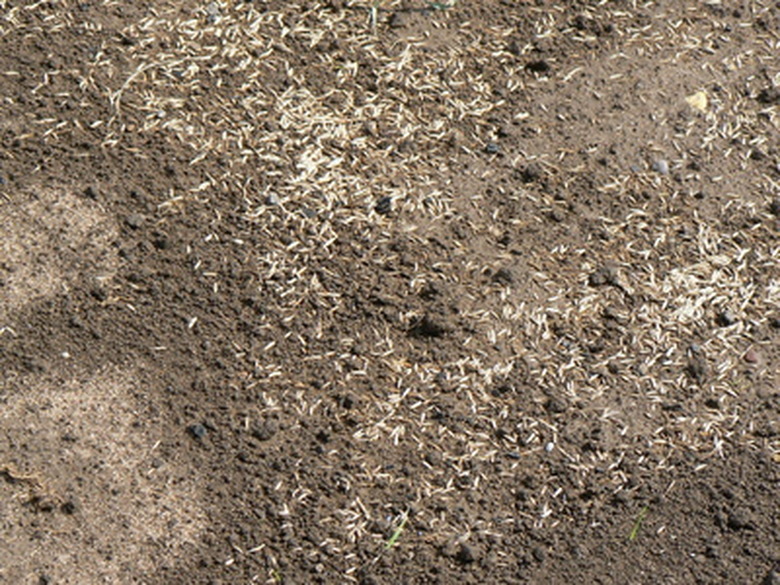Grass Seed & Freezing Temperatures
Typically, cool season grasses are planted in the early autumn or spring. It's possible to plant the grasses in the winter, however there are a variety of risks. In colder climates of the United States, sub-zero temperatures frequently occur during the winter. However, if proper steps are taken in planting grass seeds, loss due to freezing temperatures is not a concern.
Location
Colder climates are called Zone 1 in the United States. Zone 1 includes the northern states, as well as Kentucky, Arkansas, Missouri, Illinois, Virginia, North Carolina, Tennessee, Southern Ohio and Indiana.
Cool-Season Grasses
There are four types of grass that are favored in Zone 1. Those types are: Kentucky bluegrass, red fescue, turf-type tall fescue and perennial ryegrass. These can be sowed in chilly temperatures, yet meager expansion and grass malfunction can still occur.
- Typically, cool season grasses are planted in the early autumn or spring.
- These can be sowed in chilly temperatures, yet meager expansion and grass malfunction can still occur.
Kentucky Bluegrass
Kentucky bluegrass is the typical cool season grass planted in Zone 1. It is of high quality and is available in blends. However, Kentucky bluegrass develops a low root structure that is not drought resistant.
Perennial Ryegrass
Most northwestern and northeastern states in Zone 1 prefer perennial ryegrass, as it is best at adjusting and sprouts quicker in damper, cooler atmospheres. However, perennial ryegrass only lasts one season, as it is used to create temporary lawns. Consequently it needs to be replanted each year.
Red Fescue and Turf-Type Tall
Red fescue grass is best to plant in darker and cooler areas in Zone 1. Turf-type tall fescue is for colder parts of the United States, as it is the most disease resilient.
- Kentucky bluegrass is the typical cool season grass planted in Zone 1.
- Most northwestern and northeastern states in Zone 1 prefer perennial ryegrass, as it is best at adjusting and sprouts quicker in damper, cooler atmospheres.
Snow Seeding
Kentucky bluegrass, red fescue, turf-type tall fescue and perennial ryegrass can be planted on top of the snow during winter. When the snow starts to melt, the grass seeds will fall into cracks in the ground and will eventually grow.
Precautions
Grass will not develop much if grass seed is planted close to sub-zero temperatures. The seeds can rot due to the very cold temperatures or dampness in the soil. The seeds can also die off due to temperature drops that occur after development begins.
